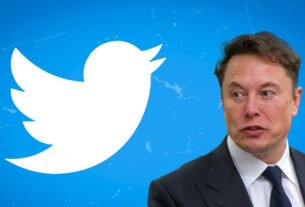Microsoft CEO Satya Nadella is a modern exponent of a genre of telling stories to explain stages in his career and illustrate his leadership principles
Telling stories can be an excellent way to illustrate arguments and bring life to abstract generalizations, something known to all human cultures for thousands of years.
Microsoft CEO Satya Nadella is a modern exponent of the genre, and he likes to use stories he experienced playing cricket in his youth to explain stages in his own business career and illustrate his leadership principles and vision for the future of his company.
As an Israeli, I myself have no idea how a cricket game is played. I do know it has two teams each of eleven players, a very hard leather ball, a number of bowlers each attacking, in turn, a series of batsmen – who are trying in pairs to defend two sets of stumps (“wickets”), sixty-six feet (twenty-two yards), apart with a wooden bat made from the choicest of willow trees. I don’t know much beyond that. But it sounds so simple, right?
In my defense, one could say that Israel’s ranking in world cricket is so low that my own minuscule level of knowledge is not to be considered exceptional. On the other hand, more than a billion Indians, and many, many more, in Britain and all parts of the former British Empire, are hugely passionate about cricket – clearly, a number that multiplies by a massive factor of times more than the number of Israelis who are enthusiastic about our own most popular sport, football.
Satya Nadella’s stories about cricket appear in his interesting book, “Hit Refresh“ first published in 2917 (and in Hebrew by Lake Publishing). It is written with two Co-authors, and in it he traces his own personal journey from childhood in India, through his career at Microsoft, all the way to the CEO position to which he was appointed in early 2014; along with insights on leadership and his vision for the company’s future.
So, naturally, I found myself trying to follow Satya Nadella’s explanation of a number of important moves in cricket, and understand the influence of the game in his life. Nadella fell in love with cricket in his childhood, and as a schoolboy reached out to the best team playing in League A of the city of Hyderabad, where he grew up. He presents in the book three stories from his past as a cricketer and assesses their relationship to three of the leadership principles that guide him today as Microsoft CEO.
His first principle, exemplified through a story of dealing with a pretty wild cricketing group from Australia, is that you must do battle without quarter against uncertainty and intimidation. Yes, respect your competitors, but do not allow the honor of contending in a match to paralyze you: just get out there and compete against them with all your strength and cunning.
The second story, about a star player in a team that thought only of himself and by doing so ruined the entire team’s game, serves to illustrate that the team must be placed first, before personal status and personal recognition.
The story behind the third principle adopted by Nadella is a little more complex. It happened when in one cricket match he was chosen to bowl, but the opposing batsmen managed to hit all the balls he bowled. At the end of his “Over” (a round of six balls bowled), his team captain replaced him with another bowler, who then very quickly managed to knock out the batsman (though not physically of course…). When that happens it is common to continue with the same bowler, but his captain immediately then returned the ball to Nadalla, who proceeded to bowl seven more overs.
Why did he do it? Nadella explains to himself that his captain was full of empathy towards him, and wanted to restore his confidence, thus teaching him an important and accurate lesson: when to intervene and when to build the confidence of the individual and the team. “Everything I learned in my youth from cricket has shaped my leadership style today, as did my experience as a husband, as a young engineer at Microsoft and later as a manager with the responsibility to develop new business ventures,” Nadella concludes.
The book is actually about the transformation that is taking place in Microsoft, driven by a sense of empathy and a desire to empower others. The idea is that people, organizations, and companies can and must continuously change – “Hit Refresh” – in their constant search for new energy, new ideas, relevance, and renewal. “In a world where the flood of technology is undermining the status quo unprecedentedly, the unique feature we call empathy is becoming ever more important day by day.”
Beyond interest in Nadella’s personal story and interesting insights on a variety of business topics, the book is a clear example of the power of stories to effectively convey messages. Nadella does not forget that when framing an argument, to convey the essence of its relevance a story can very often be the means by which he can do the job. By the way, he does this not only at work, or in the book, but also in his public interviews, and presence on social media
“Microsoft people are known as people addicted to countless PowerPoint slides while talking, but I don’t really like to rely on slides or lists. So I was free to channel my thoughts and feelings and let things flow” wrote Nadella.
By helping reduce the use of “technical crutches,” such as PowerPoint, the use of relatable stories permits direct and more meaningful, and therefore more effective, communication, just as they have for thousands of years.
The writer is a storytelling coach and consultant and messaging consultant, partner of International Anecdote
Read more about: Microsoft CEO Satya Nadella




